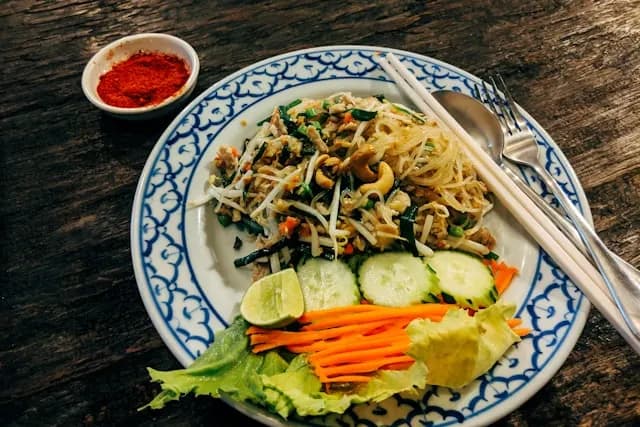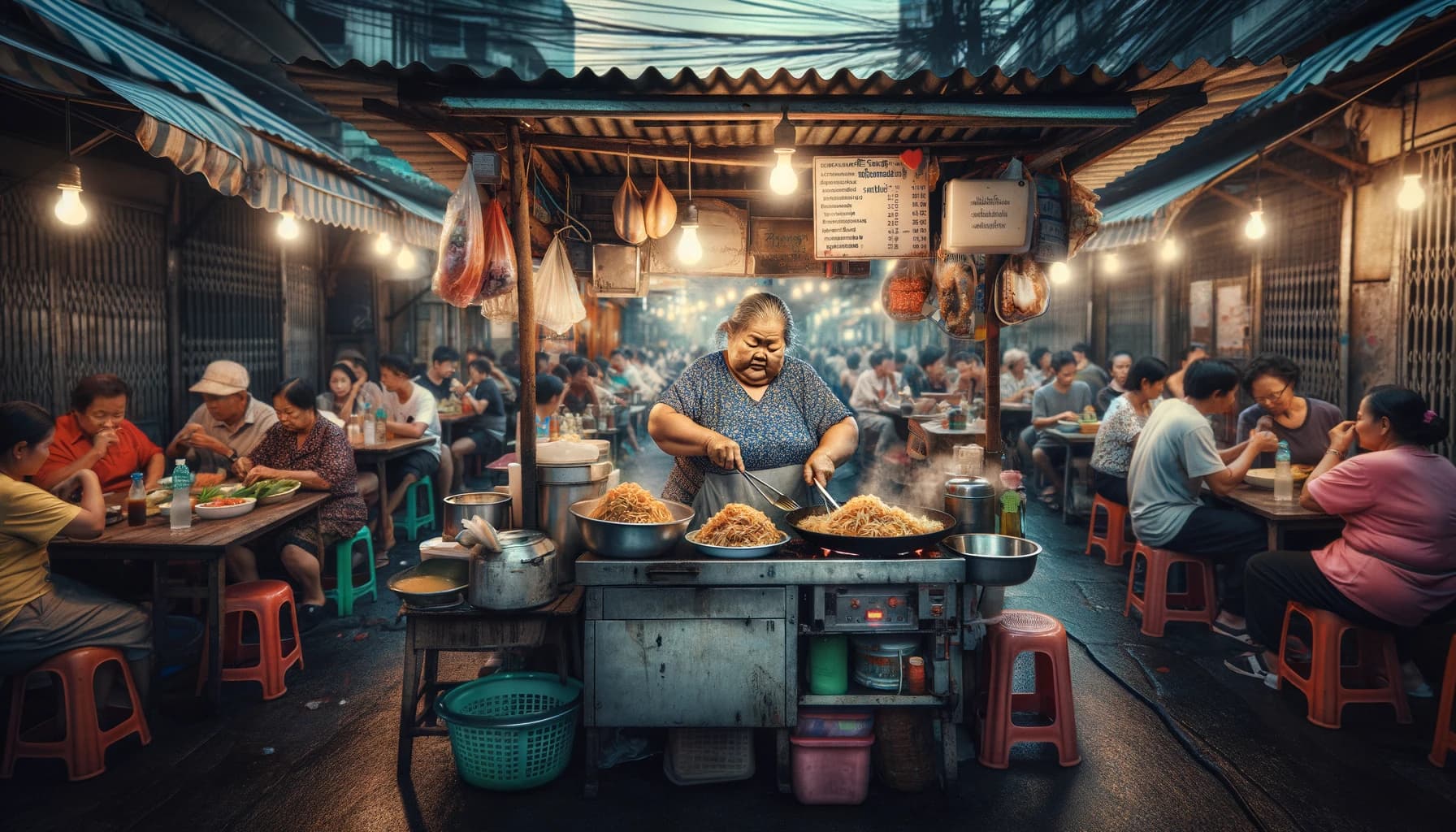The inclusion of 'Thai' in a dish's name within Thailand, is itself a hint at a curious truth: Pad Thai might not be as quintessentially Thai as one might initially believe. Traditionally known as Gway Teow Pad Thai, the name can be dissected etymologically into two segments:
- Gway Teow, translating to "rice noodles" in Chinese
- Pad Thai, with 'Pad' meaning "fried" and 'Thai' signifying its association with Thailand
The original term, Gway Teow, has largely fallen out of use, yet its presence in the dish's original name offers a clue to its roots, suggesting a Chinese influence at its culinary inception. The method of stir-frying noodles, for instance, is thought to have been introduced to Thailand by Chinese immigrants centuries ago, and later wholeheartedly adopted by Thai cuisine. This integration has turned Pad Thai into a globally recognised emblem of Thai food, likely due to its mild spice level making it an ideal introduction to the vibrant world of Thai gastronomy for those unaccustomed to the region's potent spices.
But what's the story behind this beloved dish?
When Pad Thai was invented
To grasp the full narrative of Pad Thai's evolution, it's essential to journey back in time. The precise beginnings of Pad Thai are somewhat nebulous, yet there's a consensus among historians that its development was significantly influenced by Chinese immigrants. These individuals, arriving in Thailand either as settlers or traders in the 1700s, brought with them a wealth of culinary knowledge, including the art of stir-frying.
Pad Thai's transformation into a cornerstone of Thai cuisine, however, is a relatively recent phenomenon, cemented during a notably tumultuous chapter in both Thailand's and the world's history: World War II. This period marked a turning point for the dish, elevating it from a simple recipe to an integral part of Thailand's national identity.
During the early 20th century, Thailand was immersed in a wave of nationalism, striving to modernise and Westernise while nurturing a strong sense of national identity. A pivotal element of this movement was the culinary domain. The concept of creating a national dish emerged as a strategy to unite the Thai population, aiming to instil a collective sense of belonging amongst the population.
Plaek Phibunsongkhram, a key figure in Thailand's political history, is often hailed as the architect behind Pad Thai's prominence. Serving as Prime Minister from 1938 to 1944 and then resuming the role between 1948 and 1957, his leadership was instrumental in elevating the dish from a simple stir-fry to a symbol of Thai unity and identity. His initiatives were part of broader efforts to forge a cohesive national culture, with Pad Thai at the culinary forefront.
How Pad Thai went from a war-time necessity to becoming the most famous international street food dish
The rise of Pad Thai wasn't just about bringing the country together; it was deeply connected to the need for nutritious food during a tough time. During World War II, Thailand faced a serious rice shortage due not only to the war but also to floods. To deal with this, Phibun and his government encouraged people to eat rice noodles instead of rice. This was because noodles used only half as much grain, making them cheaper and more sustainable. Plus, when you add vegetables and protein like shrimp, you get a healthy, balanced meal[1].
The government worked hard to make Pad Thai popular, using the slogan "noodle is your lunch". They gave recipes to restaurants and even handed out free carts to those willing to sell Pad Thai on the streets. At the same time, they stopped foreign vendors from selling to make sure Thai vendors had the best chance[2]. These actions didn't just keep Pad Thai alive; they made it a symbol of the nation.
At the end of World War II, Pad Thai had already become a key part of Thailand's identity. Its fame grew and went beyond the war years, making it a common sight in Thai street food scenes. Now, Pad Thai is a favourite not just in Thailand, but all over the world, served in Thai restaurants everywhere.

Photo of a Pad Thai by Markus Winkler on Unsplash
How Pad Thai's ingredients evolved
Pad Thai’s recipe has adapted over time, reflecting changing tastes and dietary preferences. The traditional version adheres to a precise blend of sweet, sour, and savoury notes, with a hint of spice. It relies on tamarind paste for its signature sourness, fish sauce for salinity, and palm sugar for sweetness. In contrast, contemporary variants might introduce alternative souring agents like lime juice or vinegar and expand the ingredient list to include various vegetables and proteins.
This dish also showcases a remarkable regional diversity within Thailand, with each area adding its own twist:
- Bangkok Pad Thai: True to its origins, Bangkok's version is a good example of the traditional recipe which has vibrant flavours, but is perfectly balanced
- Chiang Mai Pad Thai: The Northern adaptation offers a milder flavour and is typically served with a side of fresh vegetables and herbs
- Southern Pad Thai: Known for its bold flavours, the Southern version tends to be spicier
Pad Thai's cultural importance
Pad Thai is more than a quick bite; it's a nod to national pride. It embodies the collective spirit, resilience, and the Thai ability to adapt and shine through tough times. The dish has become a very important aspect of Thai identity, with its cultural importance celebrated nationwide. The legends of street food in Thailand, show everybody the Thai knack for creativity and flexibility.


